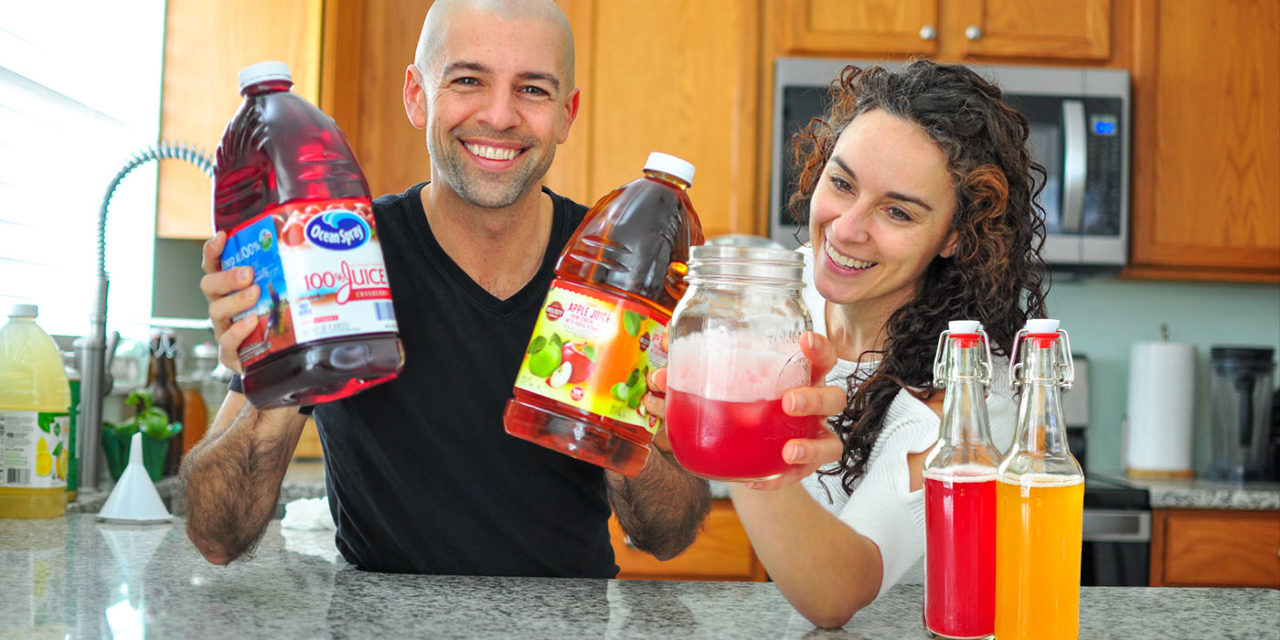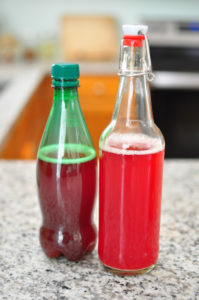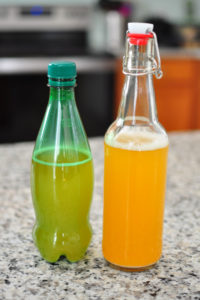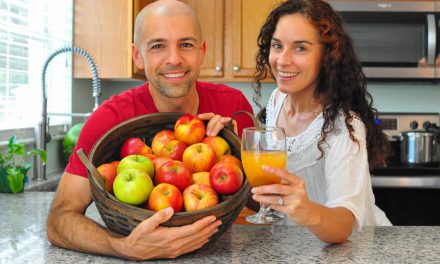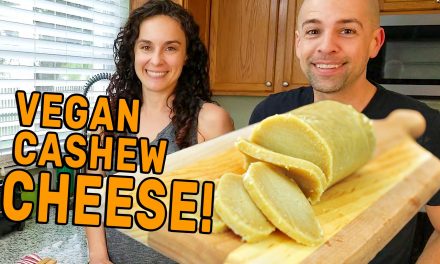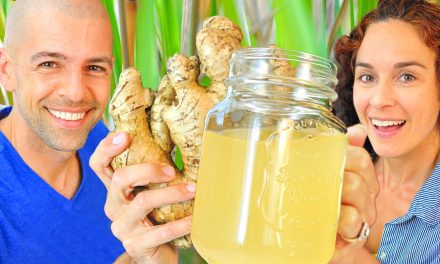Do you love fermented sodas from a ginger bug but want a faster way to make them? In today’s video we’re skipping the entire processing step of making a soda syrup and using store bought juices to make our fermented sodas. How will they turn out?
Check out the full video and subscribe to our YouTube channel. We appreciate your support!
Making Fermented Soda Using a Ginger Bug & Juice
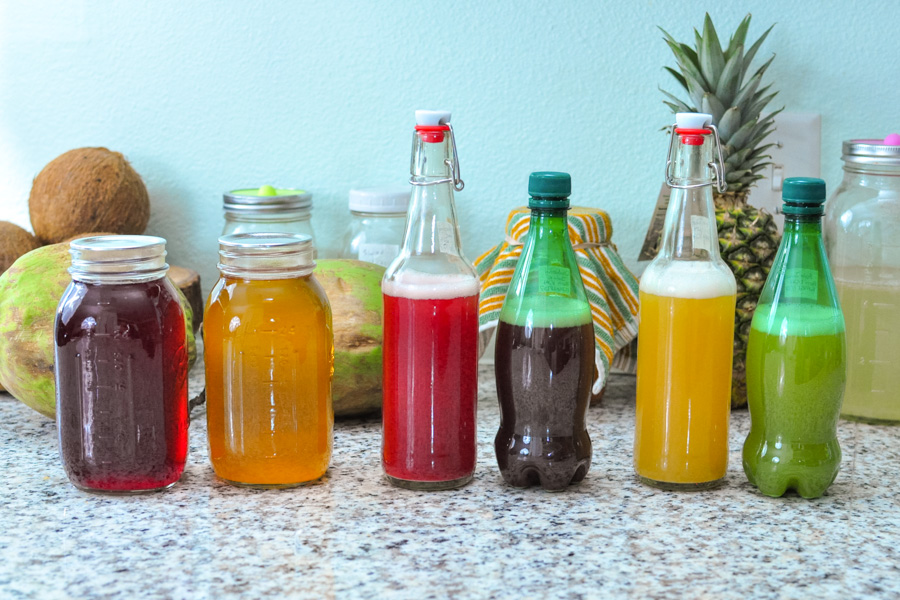
If you love making homemade fermented sodas but occasionally don’t feel like going through the processing steps of chopping ingredients, boiling and sterilizing your soda syrup, juicing, or the cleanup process – you’re going to love this!
In retrospect this makes a lot of sense but it might not have even occurred to you. All you have to do is simply buy pasteurized juice at the store, add a ginger bug starter culture and within days you’ll have delicious fermented soda that’s ready to drink!
Which Store Bought Juices are Good for Fermenting?
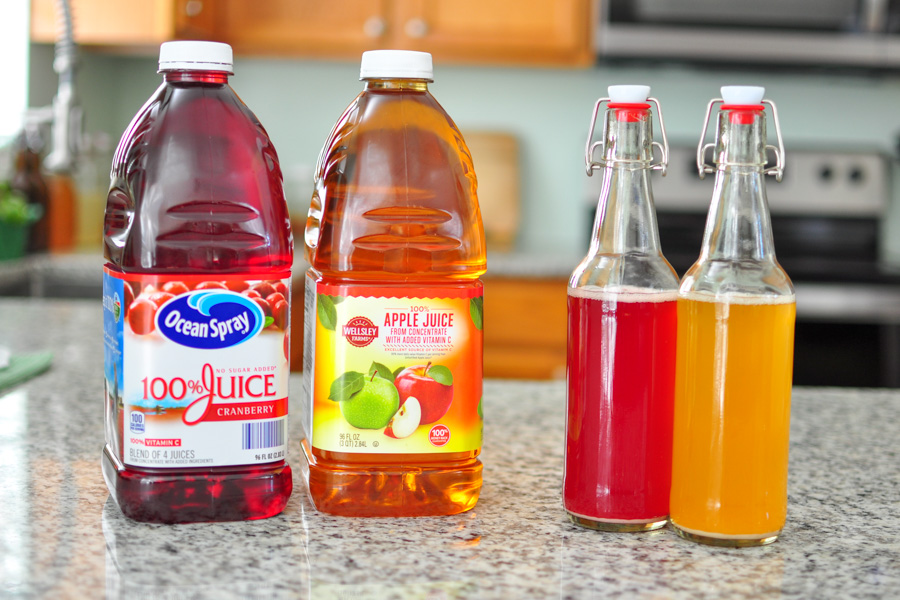
Most juices that you find on grocery store shelves that are not refrigerated are most likely good to use for fermentation. But there are some ingredients that you need to be aware of that might give you some issues.
Shelf stable juice has to be pasteurized which kills all the organisms in the juice. This is a good thing so the juice doesn’t go bad. Pasteurized juice by itself is a great thing! This means you can skip the entire process of making the juice yourself.
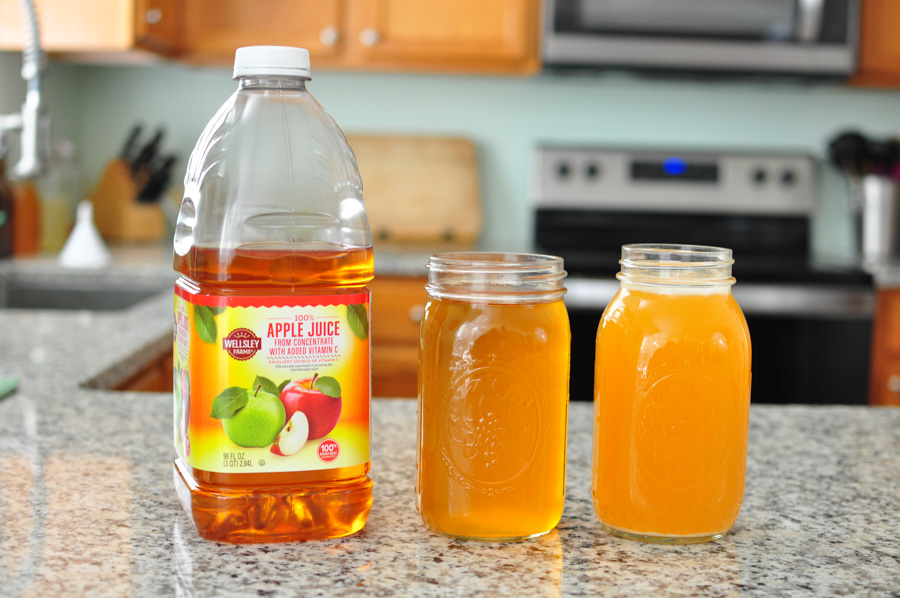
The drawback of store bought juices are the other ingredients that manufacturers might put in the bottle that will give you problems. You have to look at the ingredient list on the container and be aware of the following ingredients.
Bad ingredients:
- Preservatives such as sodium benzoate, metabisulfite, or anything that says for “freshness”
Not Bad ingredients:
- Citric acid, vitamin C
A pasteurized juice should stay good for a very long time, but after long periods of sitting on the shelf, the flavor can degrade. Manufacturers add preservatives to preserve the flavor of the juice to keep it tasting good. These preservatives can also make it last longer after you’ve opened the bottle so it doesn’t go back so quickly.
While this is great for shelf life and flavor, it’s bad for fermentation. There can also be other ingredients that are added to fortify the juice such as vitamin C. We haven’t noticed any affect on the fermentation process with these ingredients.
Fermented Soda Recipe from Ginger Bug Using Juice
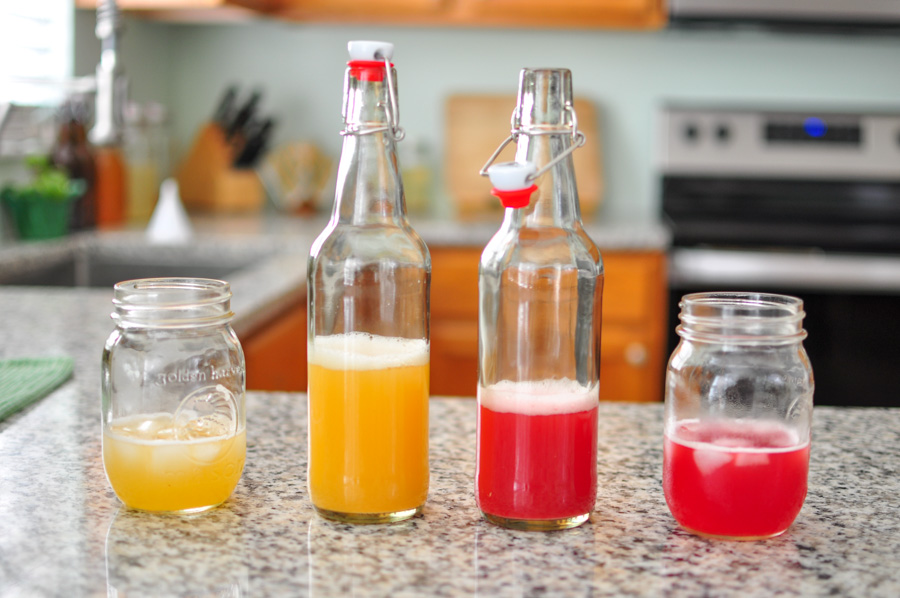
Makes 1 quart (double recipe for 1/2 gallon)
Use any pasteurized juice from the grocery store with any flavor of juice you like including cranberry, apple, lemonade, grape, and so many more. Delicious!
Equipment:
- 1 quart Mason Jar
- Cloth to cover or Fermentation lid <– These silicone lids work well for us
- (1) 16 oz. glass flip-top beer bottles <– We love these
- (1) 16 oz. heavy duty plastic bottle (such as Perrier or a soda bottle)
Ingredients:
- Store bought juice (any flavor!)
- 1/4 cup Ginger Bug starter <– full post & video on how to make one
Add 1/4 cup ginger bug starter to your mason jar.
Fill jar with juice of choice to the neck of your jar.
Cover and ferment 3 to 7 days or until it tastes good to you.
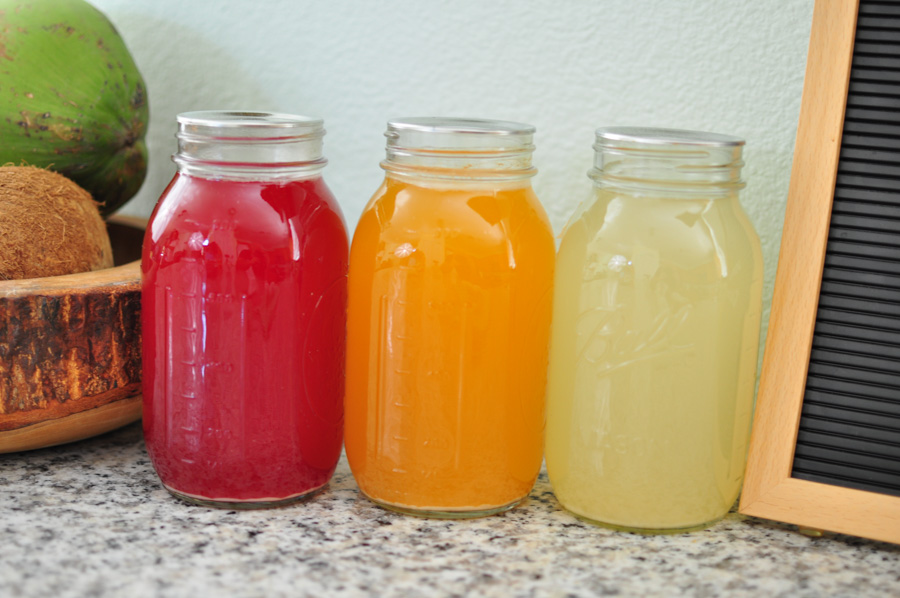
If you like carbonation, you can move onto secondary fermentation and fill swing top beer bottles with your fermented juice. You can carbonate from 1-2 days but keep an eye on it! You can burp your bottles every 12 hours to release the pressure or when they’re ready move them to the refrigerator.
Be careful! We always make sure one of our bottles is a plastic tester bottle so we can test the pressure to know how much pressure is building up in our glass bottles. After you’ve moved them to the refrigerator, they will keep fermenting very slowly so make sure to drink them or check on them to release the pressure every so often.
What to Expect During Fermentation – Juice & Ginger Bug
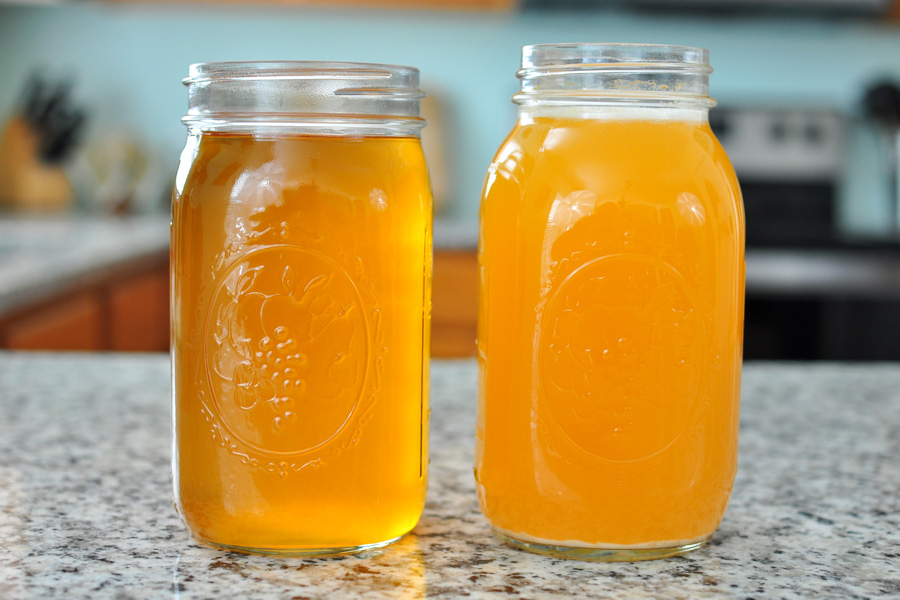
After 12 hours of fermentation, we’re starting to see bubbles right away in the cranberry and apple juice jars. This is going to be an active ferment! The ginger bug is working well on those two juices. In the lemonade jar however, no signs of bubbles.
After 24 hours we’re seeing a steady stream of bubbles rising from both the cranberry and apple juice and the jars are still fairly see through. No activity from the lemonade.
After 48 hours the bubbles in both jars are still streaming away and they’re beginning to look a little cloudy. The lemonade is inactive as can be which is very surprising! We’re absolutely sure that the ingredients in the lemonade are good and even use a flashlight to check to make sure we’re not missing any bubbles, but still no activity.
Three days into fermentation and both jars and now fairly cloudy and still have a steady streams of champagne bubbles. You can see a big difference in the clarity of the juice when you watch the part in the video where we use the flashlight to shine light through the jars. It’s pretty cool! They both smell very nice and almost beer-like! After a quick taste test we like the flavor and decide to bottle them to get some carbonation. Still no activity from the fermented lemonade!
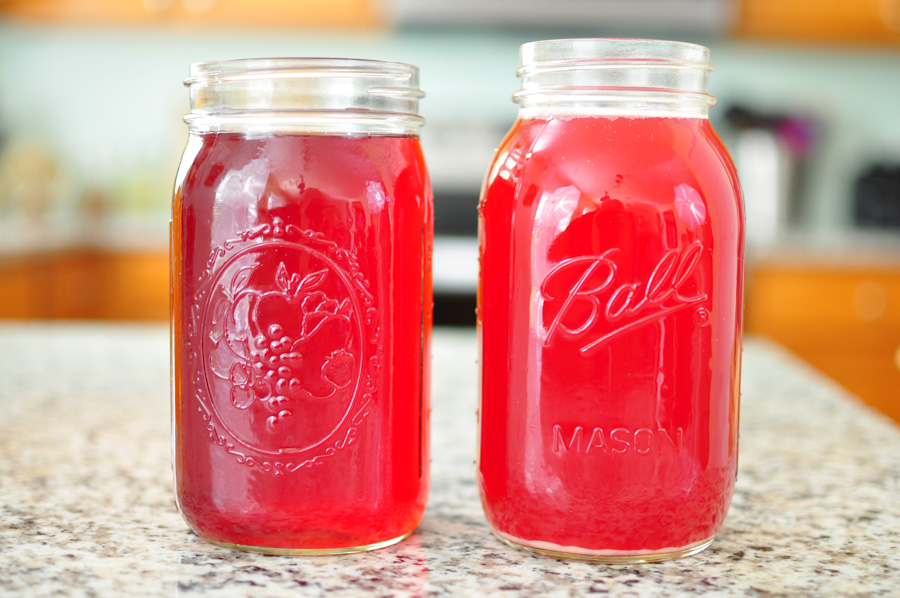
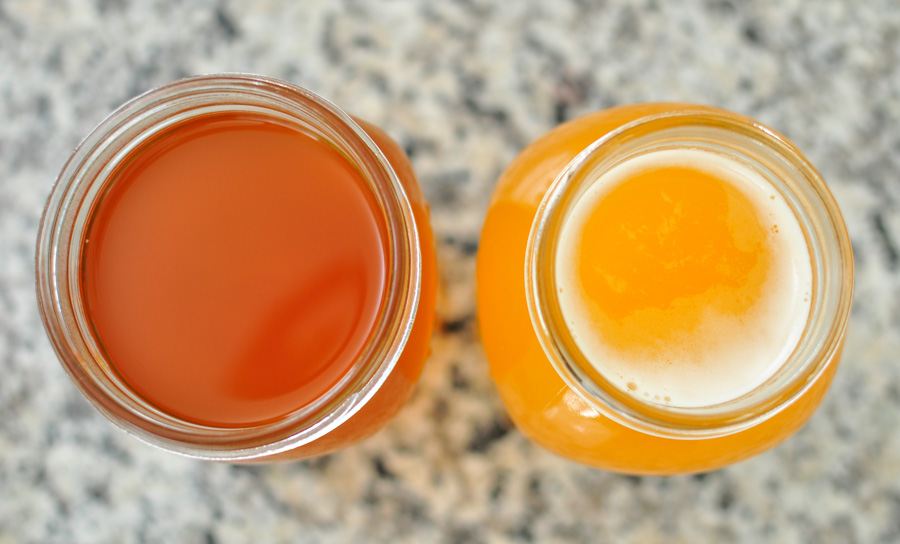
After 12 hours of carbonation, we squeeze the tester bottle and it’s rock solid! We could burp the bottles and ferment longer but decide that they’re done and move them to the refrigerator. In total we’ve had our juice fermenting for 3 1/2 days at a house temperature of about 70 degrees since it was colder out.
And finally, we have an update on our fermented lemonade! After six long days of fermentation, we finally start getting the bubbles we were hoping to see. Wow! The following days a steady stream started to rise up which means lemonade seems to take much longer. It’s possible the acidity slowed down the fermentation process with the stronger concentration of lemon juice.
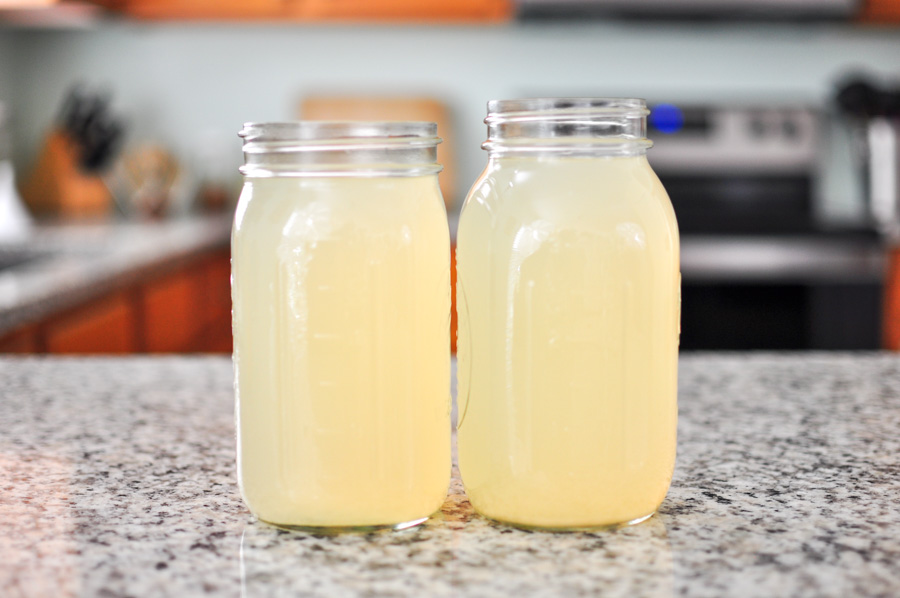
We repeated this experiment and got the same results! Lemonade seems to take longer probably due to the acidity.
Fermented Ginger Bug Sodas – Alcohol Content
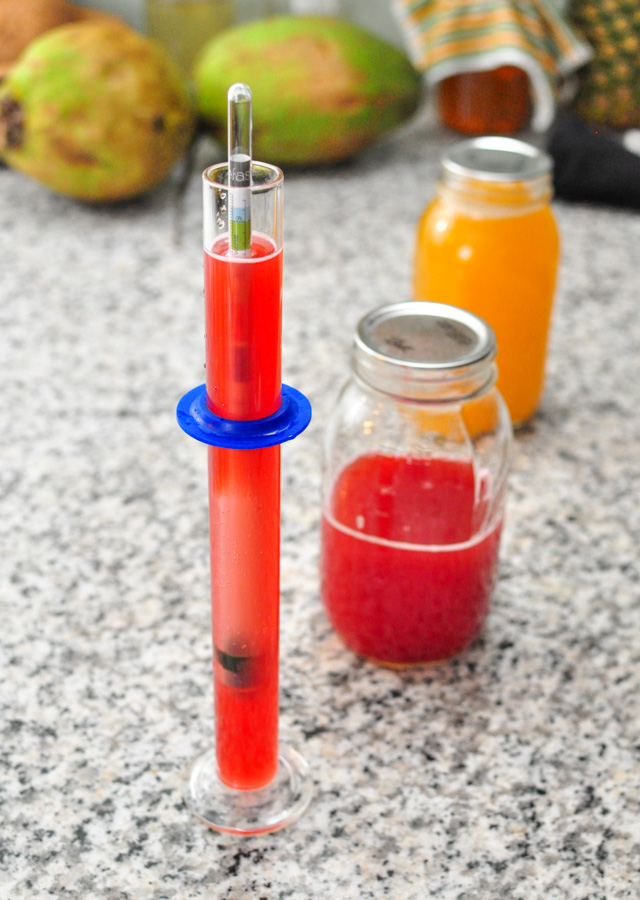
So what’s the results for our hard cider alcohol content? We’ve always been curious how much alcohol is in our homemade sodas and cider so we picked up a hydrometer to measure the alcohol content.
We measured the gravity of our homemade hard cider before and after the fermentation process and plugged it into the generally accepted formula:
Alcohol By Volume (ABV) Formula
ABV = (og – fg) * 131.25
Cranberry Juice:
Original Gravity (og): 1.046
Final Gravity (fg) (3 days): 1.022
(3 days) ABV = (1.046 – 1.022) * 131.25 = 3.1% ABV
Apple Juice:
Original Gravity (og): 1.048
Final Gravity (fg) (3 days): 1.022
(3 days) ABV = (1.048 – 1.022) * 131.25 = 3.4% ABV
After about 3 1/2 total days of fermentation, we have a fermented ginger bug sodas estimated at just over 3% alcoholic content. Wow!
Why Use Bottled Juice Instead of Fresh?
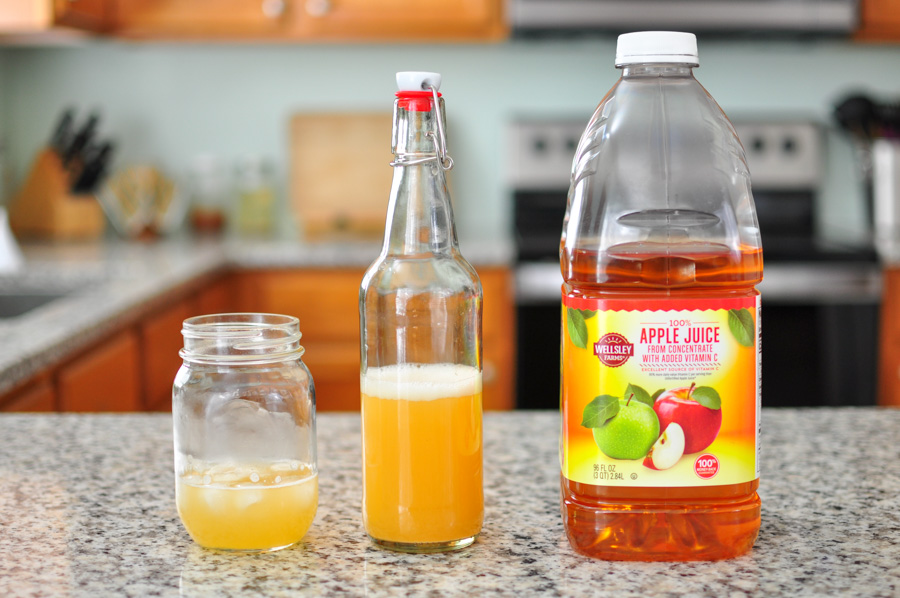
Using bottled juice to make fermented drinks is much easier and faster. Not that making juice from scratch is very hard but if you’re starting with juice that’s already pasteurized and filtered, you’re cutting down on a lot of the time and work.
You’re also taking a dead juice and bringing it to life! Once your ginger bug or other starter culture becomes active, it begins to multiply and quickly turns a dead drink into a living drink. This means if you have juice that you already enjoy and have in the house such as apple juice, instead of drinking a dead sugary drink, you can have a probiotic rich fermented apple juice!
Another benefit is that you can take virtually any sugary drink that you already enjoy, add a starter culture, and once it’s bubbling with activity, you can bottle it and have a nicely carbonate soda! For instance if you enjoy grape juice, imagine being able to make a sparkling grape juice!
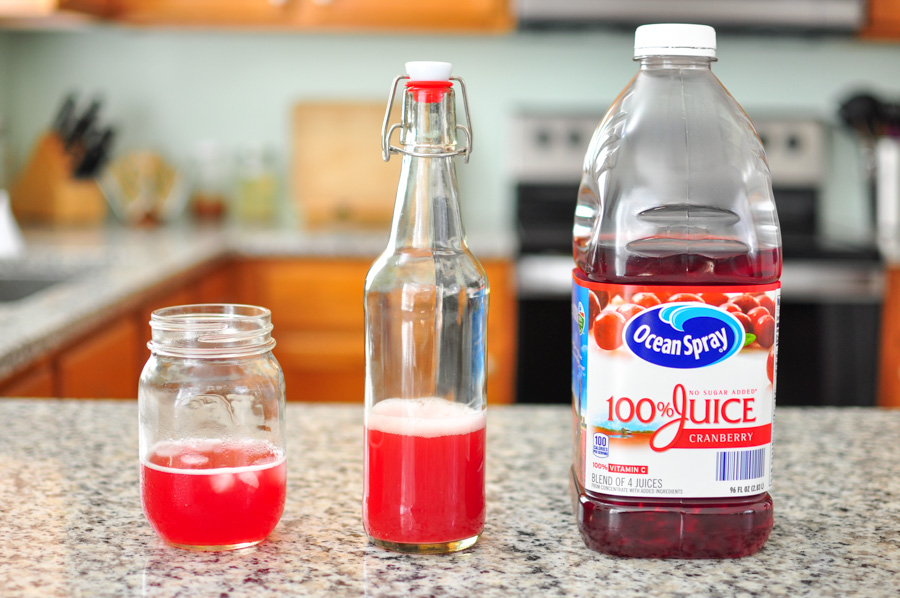
You can even experiment with mixing mix juices together and then ferment them into creative flavor combinations. Fermented apple grape soda? Cran-apple? What about trying some of those fancy natural juices in the refrigerated section? The possibilities are endless. Give it a try!
If you have any favorite juice combinations that you love or if you’ve tried this recipe, let us know! Leave a comment below and don’t forget to subscribe to our YouTube channel. Happy fermenting!

